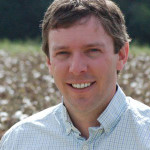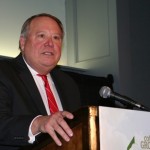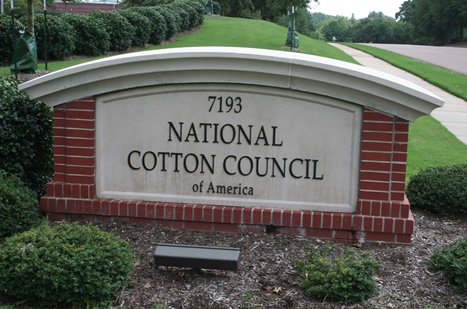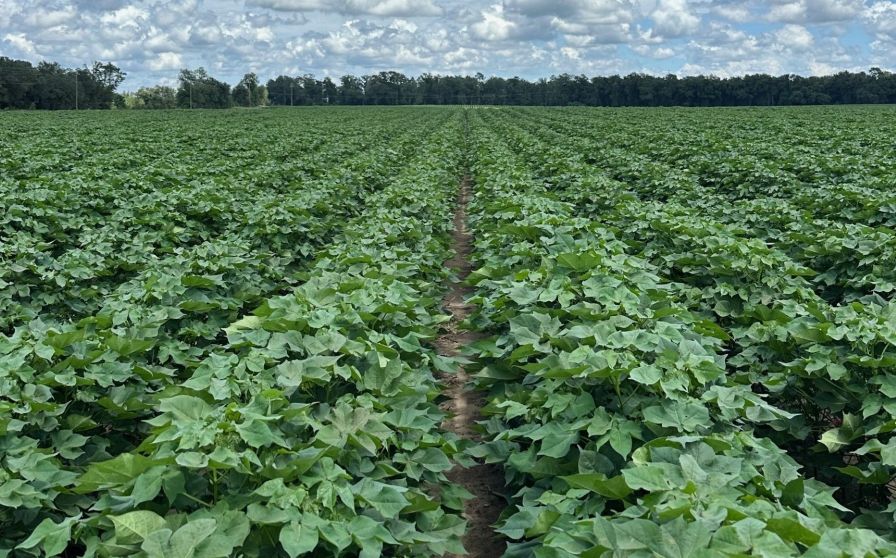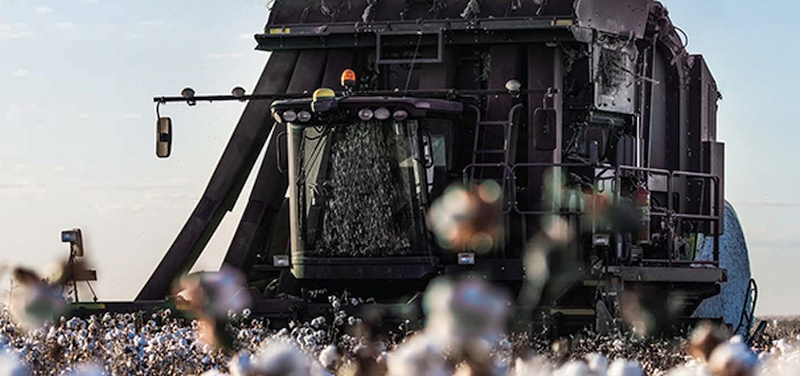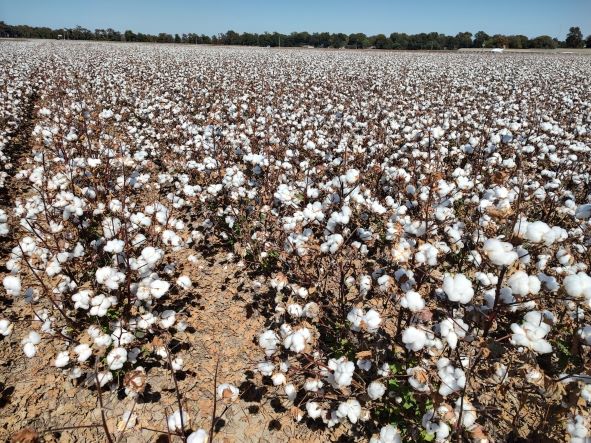2011 Cotton Marketer of the Year Ryan Kirby
2011 was a challenging year for most growers, testing their ability to get a crop out of the field, much less successfully marketing it for a decent profit. But careful planning, crop diversification and an eye on the markets paid off for Ryan Kirby, earning him the 2011 Cotton Marketer of the Year award.
Kirby, of UNI Plantation in Belcher, LA, farms a carefully-planned mix of row crops with his father, Sonny. Each year, that crop mix is determined, based on market prices, market projections for the coming year and what Kirby calculates is needed for farm profitability.
In 2011, the Kirbys planted 1,300 acres of cotton, 950 acres of corn, 250 acres of soybeans and 200 acres of wheat. Roughly 70 percent of the farm acres are irrigated, using both pivot and furrow irrigation.
“Marketing is definitely one of the hardest things to do well,” says Kirby. “One of the things that gives me an opportunity to be a better marketer is irrigation, because my yield ranges are not nearly as great as they would be otherwise. I’m more confident about how many bales I can sell ahead of time.”
For example, Kirby describes his farm’s 2011 dryland yields as terrible. “It didn’t matter what crop it was,” he recalls. “We had, from what I heard, the worst drought since 1880. And the heavy rains in Louisiana kept going north of us. The Red River came up for about two weeks in May, and that helped our wells, because we were irrigating in May.
“Cotton may be a drought-tolerant crop, but it needs something,” he continues. “The last good rain we got in-season was on May 20. I turned on the wells in late May and didn’t shut down the last well until my double-crop soybeans had enough water in mid-to-late September.”
Generations of Farming History
Like many Mid-South farming operations, UNI Plantation has been in the Kirby family for decades. And its story is fairly unique.
Kirby’s great-great grandfather originally farmed part of what is now Barksdale Air Force Base. When the government wound up with that property in the late 1920s, he had some money in hand, settled down and became a lender. During the Great Depression, he eventually had to foreclose on the original homestead where the Kirby family now lives and rented it out for several years.
When Kirby’s grandfather returned to Louisiana after World War II, he started farming the land again, making his first crop in the late 1940s. It’s been farmed by the family ever since.
“Absolutely we would like more land,” says Kirby. “But it’s hard to come by here.”
There’s even a story behind the farm name. “There was a train stop 100 years or so ago where our headquarters are now,” explains Kirby. “The name of the farm came from UNI Railway.”
Kirby plans to focus on three cotton varieties for 2012 – Stoneville 5458 B2RF, Stoneville 5288 B2F and PhytoGen 499 WRF. “ST 5458 works very well for us on irrigated land,” he explains. “Typically, ST 5288 is the best all-around variety I’ve ever seen. You can put if anywhere in any environment, irrigated or non-irrigated, and it yields with the rest of them.
“I try to put my varieties where they perform best,” he points out. “I pay attention to that.”
He also pays attention to weed resistance on his crop land. “One of the biggest ways to fight resistance is rotation with corn,” he says. “I don’t know exactly what we’re going to do this year, but I think we’re going to try Reflex as a post and try several different preemerge and residual herbicides. We direct spray with fenders.”
Plan for Profitability
Kirby relies on as much market information as he can get to help with marketing decisions. He subscribes to multiple advisory services – Dalton Group, Gulke Group, Doane’s and Top Third Marketing. All cotton is marketed and sold through Staplcotn.
“I try to be very careful,” says Kirby. “I’ve made some big mistakes that have cost me a ton of money over the years. I used to use mainly futures and occasionally options. Today, I use options as much as I can because it leaves me some upside. That way, I can profit if the market goes both ways. In other words, I won’t get the price that would be offered to me today, but I can profit if the market goes either way.”
Cotton-wise, Kirby has booked 300 bales at 96.1 cents and averaged $1.17 last year. He also has a price floor under all of his corn.
“One of the things that is most important in marketing is having a separate line of credit that’s big enough to carry you through if the market moves against you,” he advises.
“In the end, you want your first trade to be your worst trade,” he continues. “If it’s your worst, your overall average is going to be well above your first trade. I tend to book in 10 or 20 percent increments.
“Profitability is one of the first things I try to get a handle on as quick as I can to help estimate my cost of production,” he states. “That way, I can say this is what the markets are offering. Is it $200, $300, $400 or more profit? When that happens, I’m going to book some. If you look out six months to two years, I’d rather use options in case the market does go up.”
Kirby’s plans for 2012 currently call for fewer cotton acres on UNI Plantation.
“I like to grow cotton, but I like to provide for my family even more,” he explains. “Right now, corn is much, much more profitable and less risky. Our corn goes straight to the end user. We have several chicken feed mills in the area, and that’s where all of it goes. So our basis is substantially better, because we don’t go through a middle man.”
Kirby admits that the ag industry in his area was built on cotton, but corn and soybeans help keep him in business. He’s wary about cotton’s prospects for 2012.
“On my farm, I need more than 90 cents from cotton to compete with corn where it is now,” he states. “Even soybeans are more profitable for me than cotton. But last year was a different story. I made more money on cotton that I did anything else.
“I’ve talked to some economists, and the outlook for cotton doesn’t look as good for this year. I’m not sure it’s going to get over $1.05. But if I can see cotton getting back to $1.15 or better, I’ll start planting more. If we get a price spike, I’m going to sell.”


